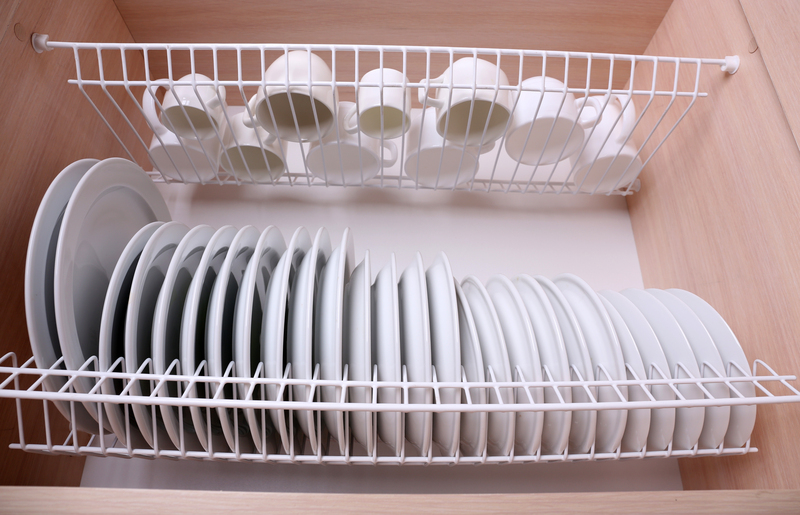Your Essential End of Tenancy Cleaning Guide for Tenants
Posted on 30/05/2025
Your Essential End of Tenancy Cleaning Guide for Tenants
Whether you are moving into a new home or returning your current rental to your landlord, the end of tenancy cleaning process can feel overwhelming. But achieving a sparkling clean property is crucial for ensuring you get your deposit back in full and maintain a good relationship with your landlord or letting agent.
This comprehensive end of tenancy cleaning guide is designed specifically for tenants. By following these top tips and systematic cleaning checklists, you'll breeze through the moving-out process and leave your home looking better than when you moved in!
Why is Thorough End of Tenancy Cleaning Important?
End of tenancy cleaning is not just about routine tidying or dusting. Most tenancy agreements include a clause that the property must be cleaned to a professional standard before vacating. Failing to do so may mean losing a significant portion--or all--of your rental deposit.
- Deposit Recovery: More than half of disputed deposit deductions arise from unsatisfactory cleaning.
- First Impressions: A spotless property impresses landlords and increases the chance of a positive reference for future rentals.
- Legal Compliance: Many tenancy agreements legally bind you to leave the property as you found it, minus fair wear and tear.

When Should You Start Your End of Tenancy Cleaning?
Start planning your move out cleaning at least a week before your moving date. Begin with rooms or items you use less frequently. Leave key areas like the kitchen and bathrooms until the last day--these will need to be in pristine condition during your final walk-through.
Essential Supplies for Tenancy Cleaning
- Cleaning cloths and sponges
- Scrubbing brushes
- Mop and bucket
- Vacuum cleaner
- Multi-surface cleaners
- Bathroom and kitchen specific cleaners
- Glass cleaner
- Oven cleaner
- Protective gloves
- Garbage bags
Room-by-Room End of Tenancy Cleaning Checklist
To avoid missing important areas, follow this detailed cleaning checklist as part of your tenant move out cleaning routine:
1. The Kitchen
- Oven and hob: Remove all racks and trays. Use oven cleaner or a baking soda paste. Don't forget the oven glass!
- Fridge and freezer: Defrost, clean shelves and drawers, and leave doors propped open if the appliance will remain empty.
- Microwave: Wipe inside and out, including the turntable and door seals.
- Worktops and cupboards: Clear out, wipe inside and outside, organizing and removing crumbs or spills.
- Sink and taps: Remove limescale, polish with a microfiber cloth, and check drains for blockages.
- Floors: Sweep and mop thoroughly, especially under appliances.
2. The Bathroom
- Toilet: Scrub inside and out, including behind and around the base.
- Sink and tap: Remove limescale, polish chrome, and shine surfaces.
- Bath and shower: Clean tiles, screen/curtains, taps, and grout to remove mold or soap scum.
- Mirrors and glass: Wipe for streak-free shine.
- Floors: Mop and disinfect.
3. Bedrooms and Living Areas
- Carpets and flooring: Vacuum all areas, including under furniture. Spot-clean stains. Consider steam cleaning or professional carpet cleaning if needed.
- Furniture: Dust and wipe down all surfaces, inside drawers and wardrobes.
- Windows and sills: Clean glass, sills, and frames. Open windows to air out the rooms.
- Walls and doors: Gently clean marks or smudges, especially around handles and light switches.
- Skirting boards: Wipe thoroughly to remove accumulated dust.
4. General Areas
- Light switches and sockets: Wipe and disinfect.
- Radiators: Dust and check behind for cobwebs or dirt.
- Curtains and blinds: Dust and vacuum; if machine-washable, consider washing curtains.
- Cobwebs: Remove from ceilings and corners in every room.
- Bins: Empty, clean and deodorise.
Commonly Missed Areas in End of Tenancy Cleaning
No matter how organized, some spots often get overlooked during the rental property cleaning process:
- Behind and underneath furniture and appliances
- Top of cupboards, doors, and picture rails
- Light fixtures and fittings
- Extractor fans and vents
- Inside washing machines and dishwashers
- Balconies, patios, or garden spaces
Including these in your checklist ensures you won't give your landlord or letting agent reason to withhold your deposit.
DIY vs. Professional End of Tenancy Cleaning: Which is Best?
When it comes to end of lease cleaning, you have two options: carry out the cleaning yourself or hire a professional cleaning service. Each has its advantages and drawbacks.
DIY End of Tenancy Cleaning
- Cost-saving: Doing your own cleaning is usually cheaper.
- Flexibility: Clean at your own pace and according to your schedule.
- Control: You know precisely what's been cleaned and how well.
Hiring Professional Cleaners
- Guaranteed Results: Many companies offer a deposit return guarantee.
- Time-saving: Professionals work quickly and efficiently, using commercial-grade products.
- Evidence: You often receive an invoice or certificate for the landlord, confirming the service.
Tip: Read your tenancy agreement carefully. If it specifically requires professional cleaning, keep your invoice as evidence for your landlord.
How to Prove Your End of Tenancy Clean
Documenting your cleaning efforts is vital. Take date-stamped photos or videos of each room and key areas, especially high-traffic zones like the kitchen and bathroom. If you hire professionals, ensure you have a receipt. This way, if there's a dispute, you have supporting evidence of your tenant cleaning efforts.
Addressing Damages and Wear
Only 'fair wear and tear' is acceptable under most rental agreements. If you spot repairs, such as wall holes or broken fittings, address these before cleaning. Tenants should:
- Fill small holes with filler and repaint if necessary.
- Replace any lost keys, remotes, or lightbulbs.
- Report larger issues to the landlord in advance to avoid disputes.
Frequently Asked Questions About End of Tenancy Cleaning
Do tenants always have to pay for professional cleaning?
It depends on your lease. Since June 2019 in the UK, landlords can no longer demand compulsory professional cleaning unless you received the property professionally cleaned. However, if your landlord can prove professional cleaning is required to restore the property to its original state, deductions may occur.
How long does end of tenancy cleaning take?
It varies. For a small flat or apartment, plan on a full day if working alone. For houses with multiple rooms, expect 1-2 days, or less if you have help or hire professionals.
What happens if my landlord isn't happy with the cleaning?
They can make written deductions from your deposit, provided they provide a breakdown of costs. You can dispute these via your tenancy deposit protection scheme and provide photographic or invoice evidence of your cleaning.
Final Steps Before You Hand Over the Keys
- Walk through the property with a copy of your inventory/condition report.
- Check all utilities are working and provide final meter readings if required.
- Return all keys and extras (garage fobs, parking passes, shed keys, etc.).
- Take date-stamped photographs of each room as proof of condition.
- Leave your forwarding address for any further communication.

Top 10 Tips for Stress-Free End of Tenancy Cleaning
- Plan ahead: Schedule your cleaning and moving days separately if possible.
- Declutter first: Donate, recycle, or dispose of unwanted items to save time later.
- Use the right products: Match your cleaning products to room surfaces for best results.
- Don't leave the oven until last: This is often the most time-consuming task--start early.
- Ask for help: Rope in friends, family, or housemates, or consider hiring a professional service.
- Work top to bottom: Clean upper surfaces first (cobwebs, tops of cupboards) to avoid re-soiling lower areas.
- Check your tenancy inventory: Use it as a checklist to ensure nothing gets missed.
- Double-check hidden spots: Behind radiators, beneath appliances, inside wardrobes, etc.
- Open windows: Let air circulate and help freshen the property.
- Photograph everything: From shining ovens to clear plugholes--your best evidence!
Conclusion: How to Make End of Tenancy Cleaning Effortless
End of tenancy cleaning for tenants doesn't need to be a hassle. Start early, organize your cleaning room-by-room, use this comprehensive checklist, and always document your results. Whether you tackle the job yourself or hire cleaning professionals, your main goal should be to leave the property in the same (or better) condition as when you moved in.
Remember: Great cleaning leads to a full deposit return, helpful references, and a positive end to your tenancy. Make your moving experience less stressful by refining your end of lease cleaning routine today!




